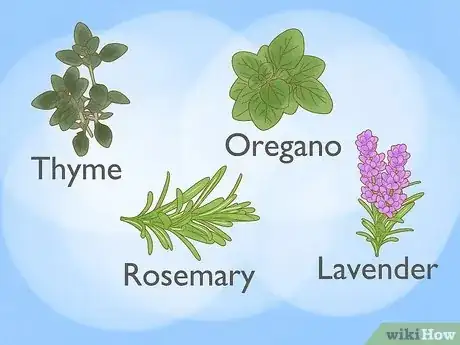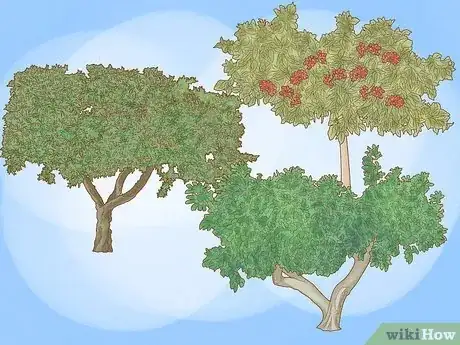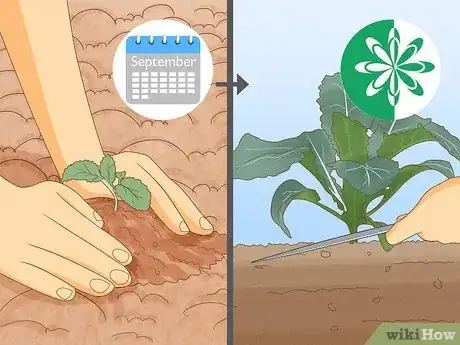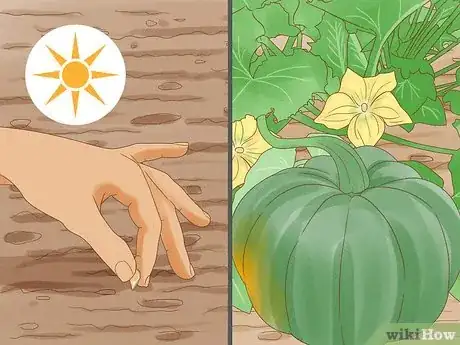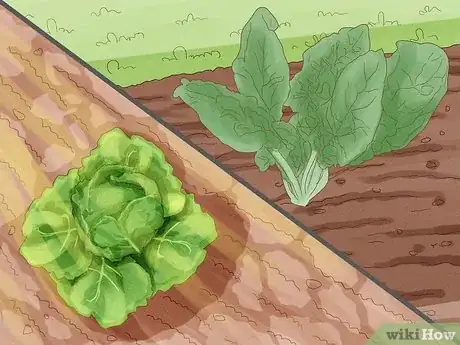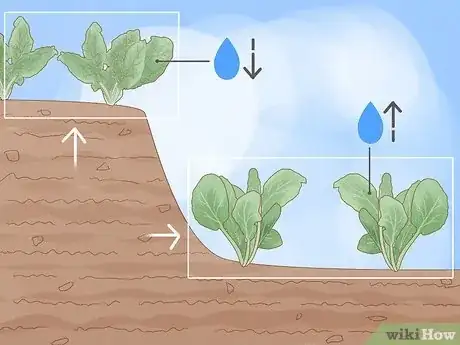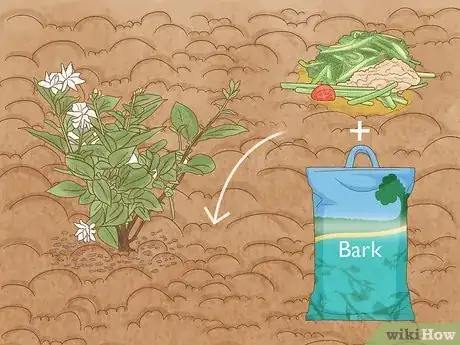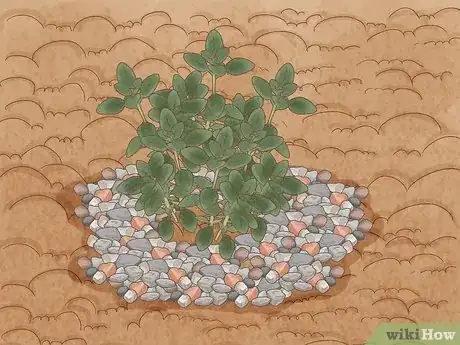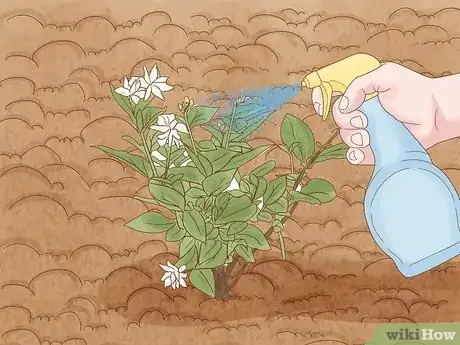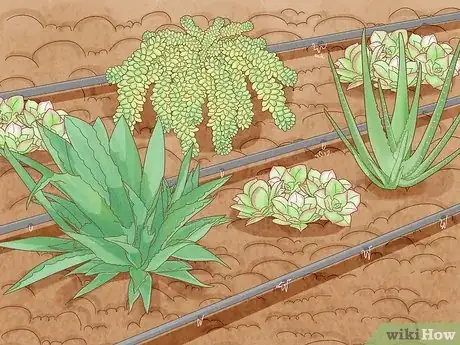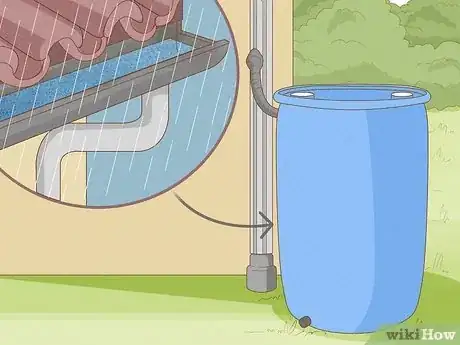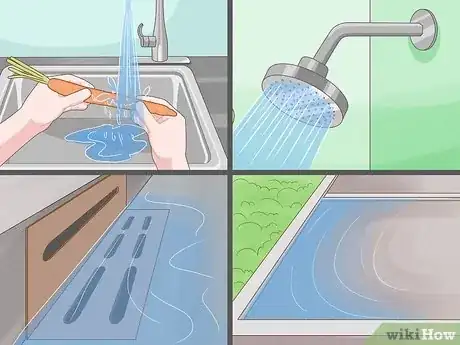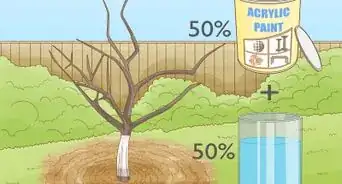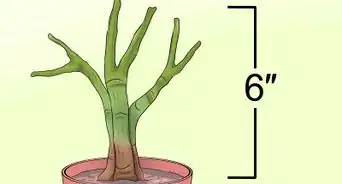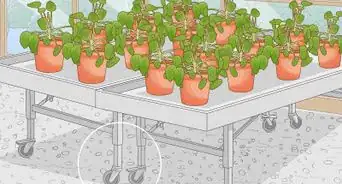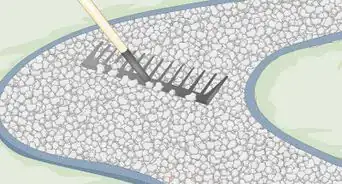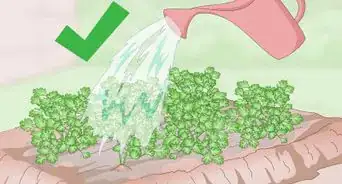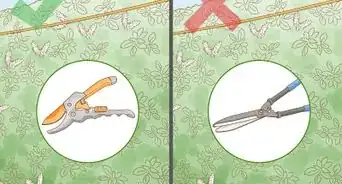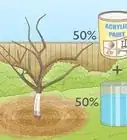This article was co-authored by Lauren Kurtz. Lauren Kurtz is a Naturalist and Horticultural Specialist. Lauren has worked for Aurora, Colorado managing the Water-Wise Garden at Aurora Municipal Center for the Water Conservation Department. She earned a BA in Environmental and Sustainability Studies from Western Michigan University in 2014.
There are 11 references cited in this article, which can be found at the bottom of the page.
This article has been viewed 25,948 times.
The Mediterranean climate offers unique challenges to gardening. This climate occurs in the Mediterranean Basin (Greece, Italy, Spain, Morocco, Turkey, and other countries), south and west Australia, California, central Chile, and western South Africa. These areas have hot, dry summers, cool, wet winters, and loamy, rocky soil, so certain types of plants and trees may have a hard time surviving if they aren’t suitable for the climate. However, you can still create a beautiful garden in a Mediterranean climate by choosing the right plants, planting them at appropriate times of year, and managing their water supply.[1]
Steps
Choosing the Right Plants
-
1Choose rock-grown herbs. Herbs such as thyme, oregano, rosemary, and lavender grow well in rocky soil and in the sun. Low-nutrient soil causes these plants to produce better flavor. They don’t require much water and can be grown in barren areas.[2]
- Supplement their growing area with gravel. Stones absorb heat, helping the plants grow.
-
2Plant native shrubs and succulents. Look around your area for inspiration when selecting plants. The shrubs and succulents that grow naturally here are evergreens. Many of them have deep roots and features that limit water loss. Substitute taller, greener plants for thinner, smaller, and grey-green shrubbery and succulents such as aloe and agave.[3]
- The off-green color of these plants helps them reflect sunlight.
- Some plants that grow in this climate can also shed their leaves during dry periods or reorient their leaves to avoid direct sunlight.
Advertisement -
3Add fruit trees. Many important fruit crops come from Mediterranean climates. Olive, pomegranate, and fig trees naturally occur there, as well as pistachios. However, other trees, such as citrus and nut trees, thrive during the winter. Give them adequate amounts of sunlight and water and they’ll grow well.[4]
- Many trees in Mediterranean climates are small and thin in order to survive with minimal water.
- Some larger trees including oaks and pines are common in Mediterranean greenlands, so you can grow them along with fruit trees in your environment.
-
4Select climate-resistant flowers. Areas within the Mediterranean Basin often experience droughts in the summertime. Many flowers well-known in gardening from northern parts of the world, such as rhododendrons and azaleas, struggle in this dry Mediterranean climate. These flowers grow slowly and require lots of shade and water. Instead, choose plants such as rockrose, jasmine, wisteria, and climbing vines.[5]
- Drought-resistant roses such as teas also do well here.
Planting Your Garden
-
1Plant in fall. Mediterranean climates have gardening weather year round. Winter is a great growing time for many plants because of the cooler temperatures and rainy season. Leafy vegetables such as kale and root vegetables such as carrots are some of many plants that do well in winter. Begin planting in September and plan on harvesting by spring.[6]
- Fruit and nut plants such as persimmons, citruses, and chestnuts will also produce in the winter.
- Grow sprouts inside during this period along with herbs moved inside or kept near a window year-round.
-
2Grow warm-season crops in summer. Warm-season crops cannot survive the winter frost and need sunlight to grow. These plants include tomatoes, watermelon, corn, and squash. Most other plants should be allowed to take advantage of the rainy winter season.[7]
- Flowers with no frost resistance, also need to be attempted in summer or avoided.
- Herbs favor the sunlight and go dormant during the winter.
-
3Control sunlight exposure. It may help you to separate your gardening area based on exposure to sunlight. Before you plant, try to plan out where you’ll place your plants. Herbs such as sage and rosemary, for example, prefer full sun while others thrive in part or full shade.
- Put space between your plants so that they don’t shade each other and their roots don’t compete for water.
- Vine plants such as cucumbers climb on vertical growing platforms to get sunlight. These platforms can be used as shade for other plants.
- Some plants, including leafy vegetables such as lettuce, benefit from some shade, while others, such as spinach require more shade and should be grown in smaller amounts.[8]
- Don’t be afraid to move plants during the evening or hang sheets over vulnerable plants during the afternoon in order to give them some shade.
-
4Group your plants according to water need. This practice is called hydrozoning and, if you’re growing a variety of plants, can help you manage a limited water supply. Separate your plants according to low need, medium need, and high need. Allot your water as needed and consider replacing your area of high-need plants with native varieties in case of drought.[9]
- Plant high need plants in low areas where water drains well.
- Plants of low and moderate water need can be supplemented with mulch and compost to retain water.
- Account for your lawn if you have one. Lawns consume a lot of water and limit what you can afford for thirsty plants such as begonias and hydrangeas.
-
5Amend your soil with a layer of compost. Organic material, such as kitchen scraps and bark, provides nutrients to plants through the process of composting, and also helps soil retain more water by making it more porous. It can be bought in lawn and garden stores or made at home. Place a couple of inches of dark, moist compost around your vegetables and flowers to help them grow.[10]
- Compost provides nitrogen lacking in Mediterranean-climate soil and also helps hold in moisture.
- Remember to aerate the compost and water it throughout the season. When it begins to solidify and become less crumbly, moisten it again.
-
6Add mulch. Adding a layer of mulch, such as gravel or wood chips, can help most of your garden. Mulch prevents the soil from losing more water to the heat. Gravel also helps hold in heat for drought-resistant plants.[11]
- Plants that prefer poor soil, such as herbs, benefit more from gravel than organic mulch.
- Mulch also limits the amount of weeding work you need to do.
Watering Your Garden
-
1Water your plants by hand. Watering by hand is simple if you have a small amount of plants. Water them in accordance with their needs. Use a bucket or spray bottle to limit the amount of water you use. Not only do some plants suffer in wet soil, water is a commodity during drought months. Add enough water to moisten the soil of most plants every week. Deeply soak plants with a high water need.
- Drought-resistant plants actually do worse when given lots of water. Remember that they evolved to survive in this environment.
-
2Install drip irrigation. Drip irrigation is a slow method of delivering water to plants. This is good for drought-resistant and mulched plants. Connect your garden hose to your faucet then connect smaller hoses to the other end of the hose. Poke holes in the smaller hoses, then turn on the water. Instead of the spray from the big hose, water will dribble out of the holes.
- Another way to do this is to poke a hole in a bucket and set it on the mulch before filling it.
- Many companies sell drip irrigation systems and kits. You can add timers, pressure systems, and sprayers to control your water use.
-
3Harvest water. Water conservation is important in Mediterranean areas. During the fall and winter, collect rainwater and save it for the summer. Try to collect any rain that falls on an impermeable surface such as brick or concrete before it runs off. Redirect this water towards your plants.
-
4Utilize marginal water. Marginal water is the water you wouldn’t drink. This includes run-off from your sinks, showers, and machines as well as cleaned sewage water and standing water. Some of this water will help you irrigate your plants without having to sacrifice your water budget.[12]
- Test this water ahead of time to find out if it is safe for plants and soil.
Expert Q&A
-
QuestionWhat's the best time of day to water potted plants?
 Lauren KurtzLauren Kurtz is a Naturalist and Horticultural Specialist. Lauren has worked for Aurora, Colorado managing the Water-Wise Garden at Aurora Municipal Center for the Water Conservation Department. She earned a BA in Environmental and Sustainability Studies from Western Michigan University in 2014.
Lauren KurtzLauren Kurtz is a Naturalist and Horticultural Specialist. Lauren has worked for Aurora, Colorado managing the Water-Wise Garden at Aurora Municipal Center for the Water Conservation Department. She earned a BA in Environmental and Sustainability Studies from Western Michigan University in 2014.
Professional Gardener The morning is the best time to water potted plants, as watering at this time will reduce the chances of your plants developing rot and fungus problems. Be sure give your potted plants a good soaking on especially hot, dry days.
The morning is the best time to water potted plants, as watering at this time will reduce the chances of your plants developing rot and fungus problems. Be sure give your potted plants a good soaking on especially hot, dry days.
References
- ↑ http://www.pacifichorticulture.org/articles/gardeners-guide-to-the-mediterranean-climate/
- ↑ https://davesgarden.com/guides/articles/view/2197
- ↑ https://www.gardenia.net/guide/how-to-get-the-mediterranean-look
- ↑ https://www.hort.purdue.edu/newcrop/proceedings1996/V3-416.html
- ↑ http://www.sunset.com/garden/landscaping-design/mediterranean-climate
- ↑ http://permaculturenews.org/2010/10/06/winter-is-a-great-time-for-gardening-in-mediterranean-climate-areas/
- ↑ http://cagardenweb.ucanr.edu/Vegetables/?uid=8&ds=462
- ↑ http://www.pipmagazine.com.au/grow/november-gardening-guide-mediterranean-climate-2/
- ↑ http://www.mediterraneangardensociety.org/drought.html
